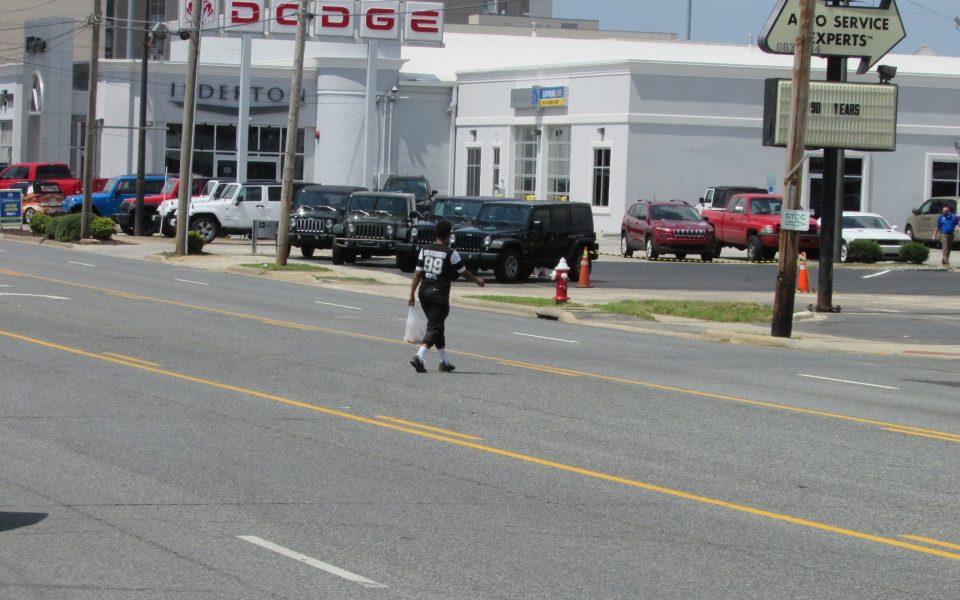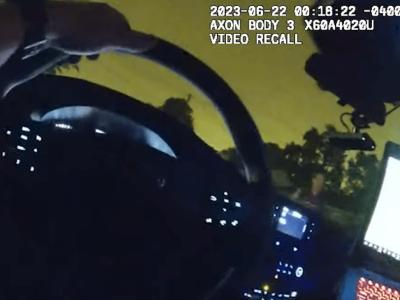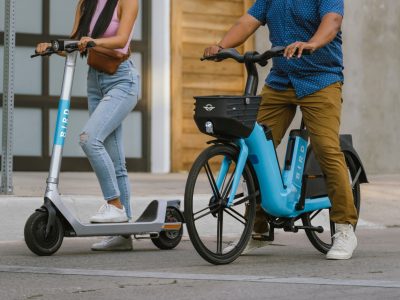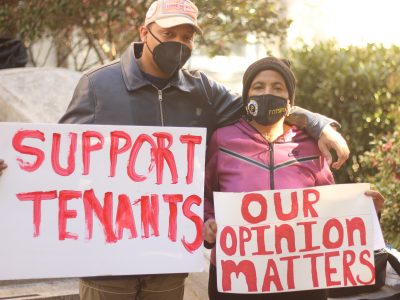A pedestrian plan gives structure to a unified vision for a more walkable city, but a number of projects are already underway or completed to make it easier for people to walk and bike in High Point.
Like most Southern cities, High Point lifted the requirement for mandatory sidewalks on new streets during the residential building boom after World War II, but reinstated the rule in the early 21st Century.
As Transportation Planning Manager Greg Venable noted, the more rigorous standards resulted in a plan for a project to widen Skeet Club Road that is currently underway to provide sidewalks on both sides. And while the plan doesn’t include dedicated bike lanes, the outside lanes will be 14-feet wide to allow cars to maneuver around cyclists.
“That’s something that is changing,” Venable said. “Before, people were more concerned about the car and moving traffic. Now, we want to include all modes of transportation. We’re improving as new projects are built.”
While evolving transportation standards are paradoxically improving the walkability of suburban areas like Skeet Club Road — an extension of Wendover Avenue near the Palladium shopping area — many residents are lobbying the city through a new pedestrian plan to focus on older areas in what’s known as the Core City.
The city is in the midst of a public input process to develop a pedestrian plan, with financial support from the state Division of Bicycle and Pedestrian Transportation. Under the competitive grant, the state and city are each putting up $35,000 to pay for the initiative. Venable said the city has received 260 completed surveys from citizens, but people can still stop by City Hall to look at an informational display and use an interactive mapping app to provide input. Venable added that citizens will have additional opportunities to give feedback at a public meeting at either City Hall or the library in September.
Dorothy Darr, a community leader in southwest High Point who was responsible for prodding the city to apply for the planning grant, wants the city to revise its evaluation methodology for prioritizing sidewalk projects.
The methodology currently used by the city gives preference to streets with minimal construction constraints and higher posted speed limits, while also considering pedestrian generators such as shopping centers, worn paths that provide evidence that people are already walking along the roadway and a history of pedestrian accidents.
“You get a lot of points if you have existing right of way,” Darr said. “That comes with new highways, and that favors newer and larger roadways.
“Nobody likes to walk along a highway with no shade where cars are whizzing along,” she added. “It doesn’t serve people who walk.”
Darr said the city should focus more of its investment in pedestrian infrastructure in the Core City, which has a higher concentration of poor people who rely on walking as form of transportation than the more affluent suburbs on the north side.
Venable said that depending on the feedback the city receives some tweaks could be made to the point system for posted speed limits, while arguing that some preference for higher speed roadways still makes sense.
“If you’re in a neighborhood with 25 mph speed limits it’s definitely safer, even though we don’t want people to have to walk in the street,” Venable said. “If you get on to a higher-speed facility like Eastchester Drive, you’re not going to walk in the street because it’s so dangerous.”
And while Venable said he can appreciate Darr’s advocacy for the Core City, he said it’s important to recognize that areas on the north side where people live, work and shop also need adequate sidewalks.
“You also have transit stops on high-speed roadways,” he said. “We want to focus on sidewalks in the Core City, but this plan will cover the whole city. You have people who ride transit who need to get to jobs. For people being able to get to shopping, to get to work, once they get off the bus, it’s important that they have a safe way to walk to those facilities.”
An interactive mapping function on the pedestrian-plan website allows users to identify locations and routes where improvements are needed. Logged suggestions reflect heavy input along the city’s Main Street spine, including requests for sidewalks around a commercial area north of Hartley Drive; retail nodes surrounding the toney Emerywood neighborhood, and the southwest quadrant; an industrial area with a racially diverse, working class population.
Predictably, one comment pinpointed near Brown Truck Brewery in Uptowne says, “Slow down traffic.”
Another comment, at the intersection of Lexington Avenue and Westchester Drive, recommends, “Sheetz is great for after-school treats with the kids. Would love to walk instead of driving when I live right in the area.”
Yet another commenter requests: “West Green Drive from South Main to Oak needs to be returned to two-way and made into a complete street to make pedestrian accessibility, comfort and safety more prominent to attract business and create jobs.”
The east-central core — a predominantly African-American area with concentrated poverty — is virtually untouched by comments, with the exception of requests for new sidewalks on Centennial Street.
Considering Darr’s role in lining up funding for the pedestrian plan, perhaps it’s no surprise that the comments on the interactive map are so heavily weighted towards the southwest quadrant where she lives.
The idea for the state grant for the pedestrian plan came from Jesse Day, regional planning director with the Piedmont Triad Regional Council, during a meeting with Darr’s group, the Southwest Renewal Foundation, in the fall of 2014. Darr recalled that her group brought the idea to then Councilwoman Judy Mendenhall and then-interim City Manager Randy McCaslin, and the previous city council approved the request as one of its final acts in December 2014. The state awarded the grant in May 2015.
At the time, the Southwest Renewal Foundation was in the midst of working with Alta Planning + Design, a Durham firm, to develop a greenway plan. Darr said her group successfully lobbied the state Department of Transportation to award the grant for developing the pedestrian plan to Alta, based on the firm’s knowledge of the city.
Meanwhile, the Southwest Greenway Plan completed in 2015 — envisioned as a six-mile network at an estimated cost of $4.1 million — was incorporated into the city’s overall greenway plan earlier this year.
“It was important because we got the blessing of the city,” Darr said. “It will be part of the pedestrian plan. When we go out and raise funding it will have some legitimacy.”
If anyone doubts the economic value of greenways, they should look at the Downtown Greenway in Greensboro, Darr suggested, noting the proliferation of housing, retail and dining around the pathway.
Complementing the Southwest Renewal Foundation’s efforts in the Core City area, the city has secured $1.2 million in federal congestion mitigation and air quality funds to link the High Point Greenway with the Bicentennial Greenway. The High Point Greenway currently runs from Armstrong Park through the campus of High Point University, past Andrews High School and on to Deep River Road. The new connector will provide a link to the southern terminus of the Bicentennial Greenway near the Piedmont Environmental Center on Penny Road. While there remain a number of incomplete segments, the trail corridor could potentially link High Point with the state Mountains-to-Sea Trail. Venable said construction of the connector could begin as early as August or September.
The greenway link is only one example of improvements moving forward regardless of the final recommendations in the pedestrian plan being shepherded by Alta.
In 2012, the Southwest Renewal Foundation applied to the state Department of Transportation for federal Safe Routes to School funds to build sidewalks around the two elementary schools in the quadrant, Fairview and Oak Hill. The state awarded $200,000 for new sidewalks around the two schools in the southwest quadrant, along with $300,000 for other elementary schools in the city. Darr said construction on the sidewalks in the southwest area is expected to begin this summer.
Meanwhile, the city has added a signalized mid-block crosswalk with a median refuge on South Main Street in front of GTCC and added signage to another one in front of Brown Truck Brewery in Uptowne.
“Any time you have new development and you have something that attracts people, you’re going to have more pedestrians,” Venable said. “With increased pedestrians in the area, we wanted to make it as safe as possible. We want motorists to be aware that they must yield to pedestrians. Not everyone understands that rule.”

©
Join the First Amendment Society, a membership that goes directly to funding TCB‘s newsroom.
We believe that reporting can save the world.
The TCB First Amendment Society recognizes the vital role of a free, unfettered press with a bundling of local experiences designed to build community, and unique engagements with our newsroom that will help you understand, and shape, local journalism’s critical role in uplifting the people in our cities.
All revenue goes directly into the newsroom as reporters’ salaries and freelance commissions.





Leave a Reply